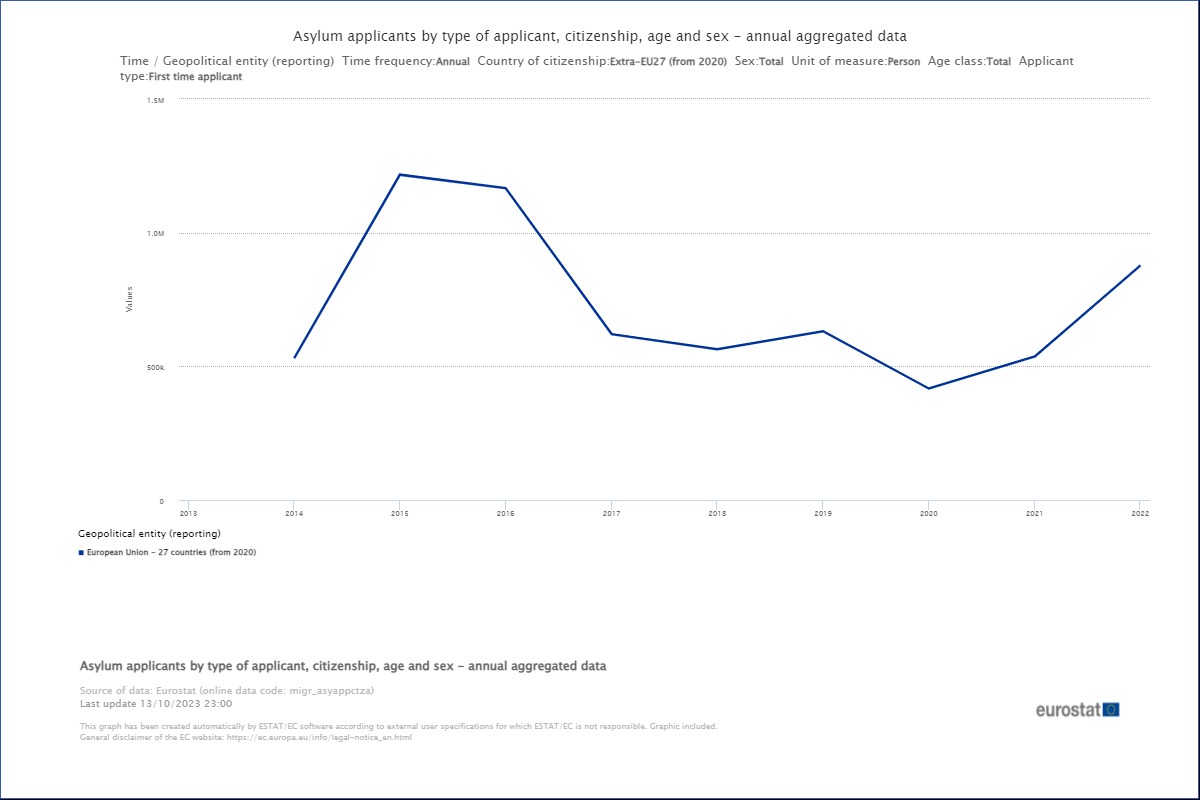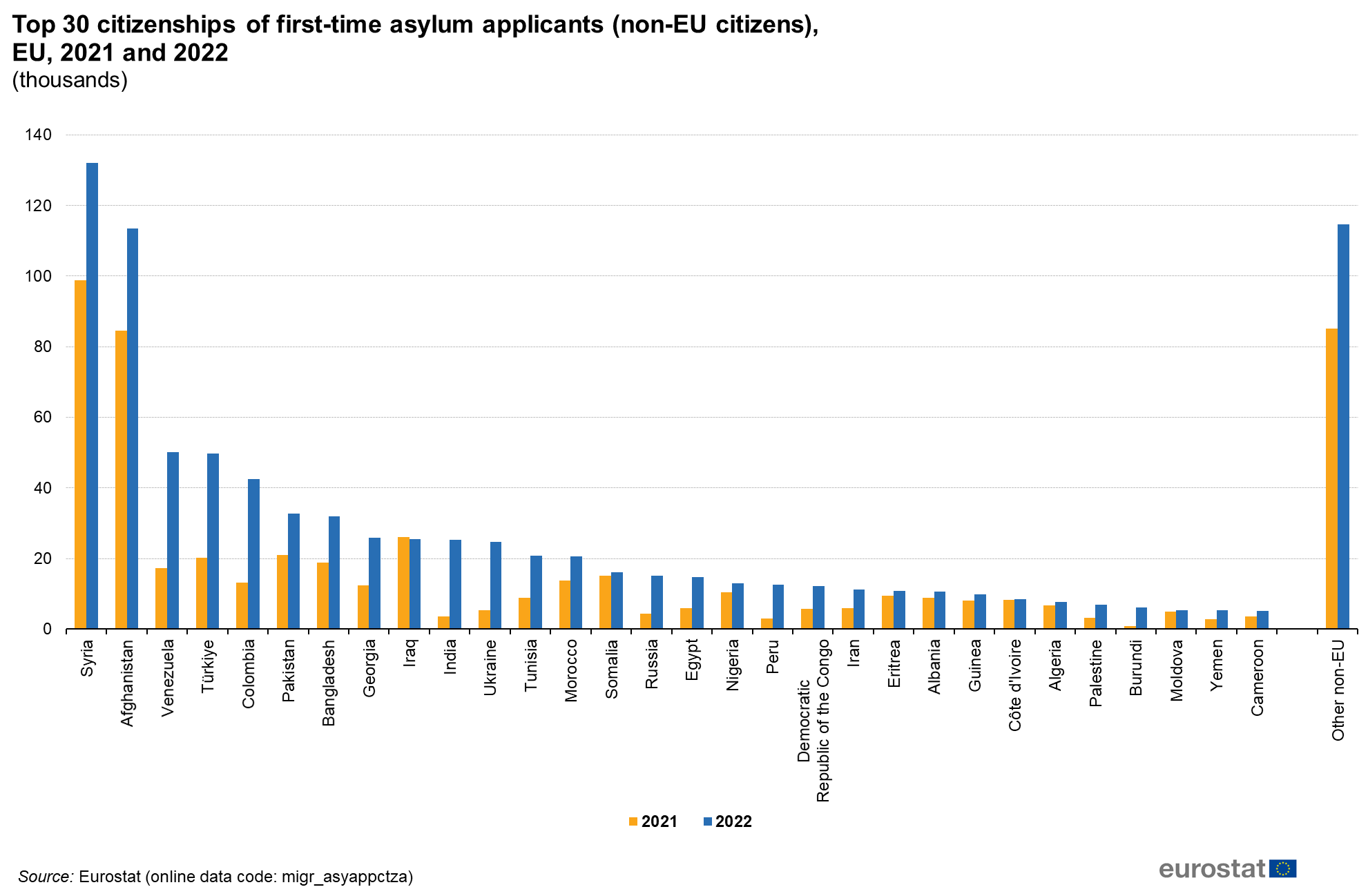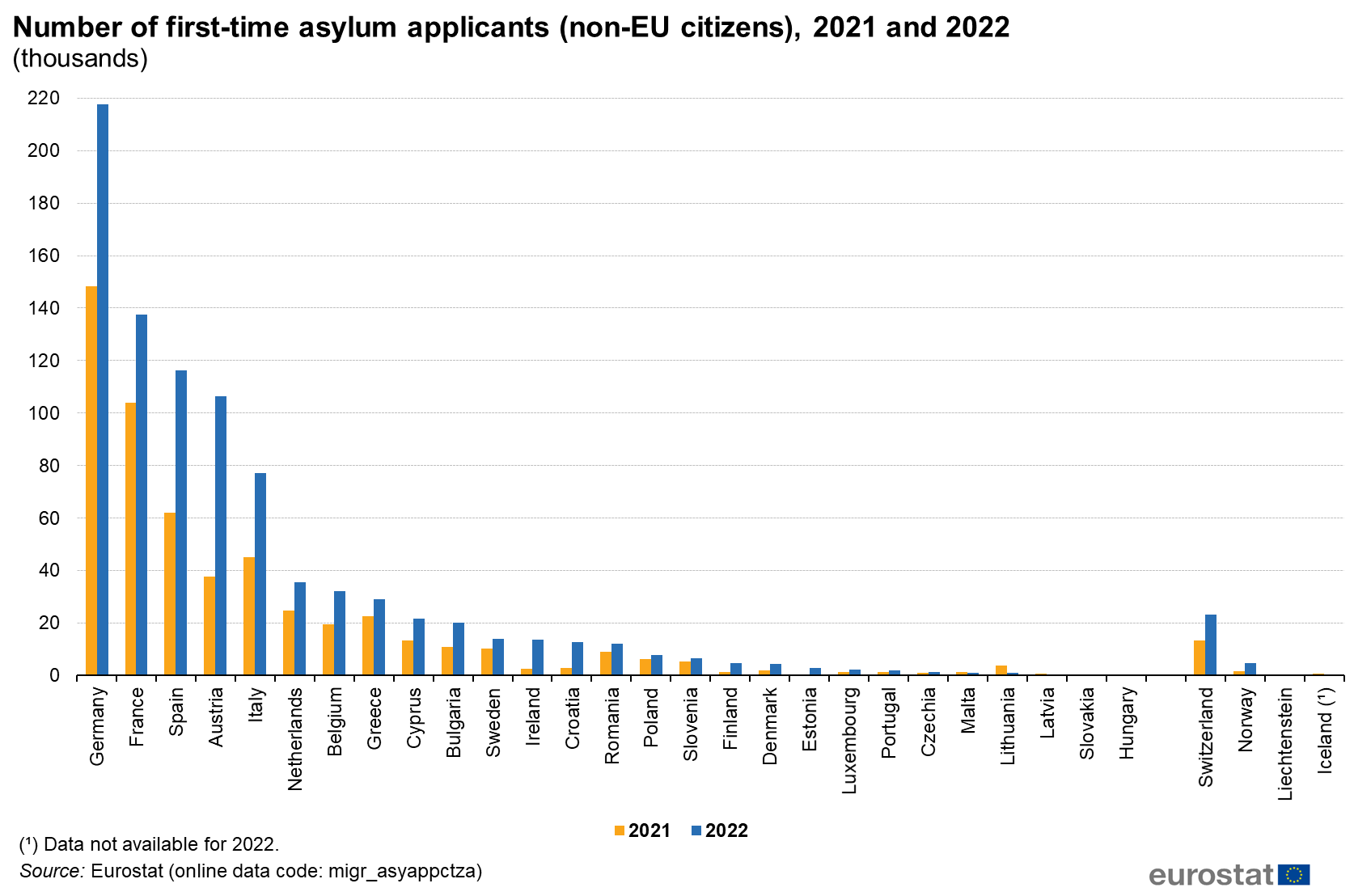Share
The number of people seeking protection in Europe has increased significantly in recent years. As strive, conflict, and violence in all parts of the world spark large-scale and protracted movements, some refugees seek safety beyond the immediate area. According to the Geneva Convention (1951) for refugee status, it is a human right to seek asylum when being persecuted from the home country.
In 2013, the Dublin Regulation III (604/2013) was signed in terms of EU law, which stated that only a member state of the E.U. is responsible for the examination process of an application submitted for asylum from a third country, in order to prevent multiple application of asylum by a single person. According to EU negotiations, it is to be replaced by the Asylum and Migration Management Regulation in 2024.
Moreover, the EURODAC Regulation 1 has been adopted, a database containing fingerprints and personal data, in order to detect multiple asylum applications.

The year 2015 has been a challenging year for Europe facing the biggest refugee flow towards the continent. According to the UNHCR, in 2015 over 1 million refugees fled their countries arriving in Europe by crossing the Mediterranean, especially Italy and Greece, but when it comes to asylum seekers’ applications according to Eurostat the same year was the peak (2015-2016), with around 1,2 million people to have applied for international protection and asylum.
However, the number of arrivals decreased in 2016, with the main reason for the closing of the Balkan route, that many countries, such as Hungary, Serbia, and Slovakia after the unprecedented refugee flow, strictly closed border or were selective to only specific ethnicities. This is because the EU and Turkey implemented an agreement that was intended to contain the flow in Greece. (Apergis Spyros, 2019).
Moreover, a decline is noticeable in the year 2020 and the reason is the COVID-19 pandemic. This year has been challenging for all sectors and fields, but regarding the refugees and asylum seekers, the effect was obvious as borders were closing, and strict policies and entry limitations were put into practice. Despite this fact, there are documented around 400,000 asylum seekers’ applications.

Conflict-linked displacements with another refugee flow peak in 2021 & 2022, due to the Taliban invasion and takeover in Afghanistan (May 2021), to war in Syria (July 2021), and the armed conflict huge outburst between Russia and Ukraine (March 2022)
This can be confirmed by another table, where Syria and Afghanistan had the largest flows towards Europe in 2021 & 2022, and Ukraine increased asylum applications in 2022.

From another point of view, now we can see according to Eurostat, the receiving countries with the largest asylum applications, which both in 2021 & 2022 were hosted by Germany, almost reaching 200,000 applications in 2022, and France with 140,000 first-time applications. In third place is Spain, due to Venezuela and Colombian asylum seekers’ applications.


